These meat-eating plants are masters of deception
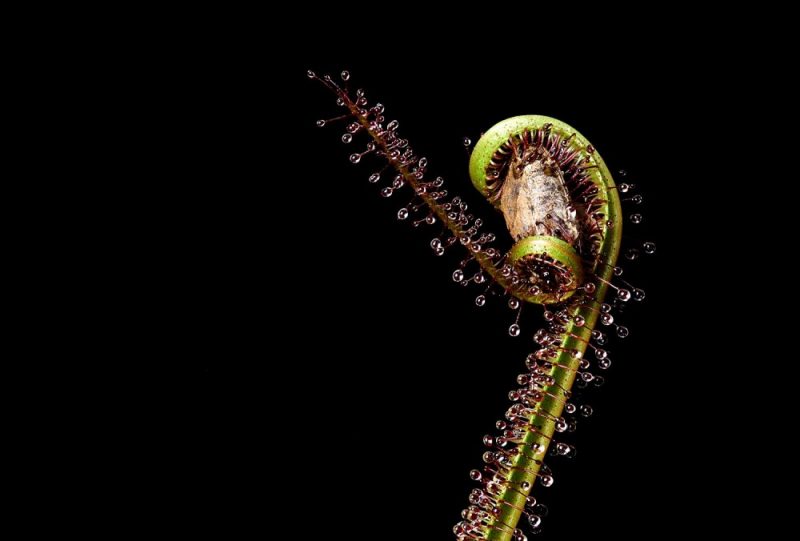
TIME AND AGAIN, plants have evolved the ability to eat animals. From Madagascar to North Carolina, wildly different kinds of flora have figured out how to thrive in nutrient-poor soils by adding crunchy insect snacks to their diets. Lacking the power of flesh and fangs, carnivorous plants catch and consume prey with a more inventive set of traps, anatomical structures, and chemical potions. And while they can be difficult to track down in the wild, the US Botanic Garden in Washington, D.C., hosts a staggering collection of them, giving scientists and general admirers a chance to study species’ wily ways up close.
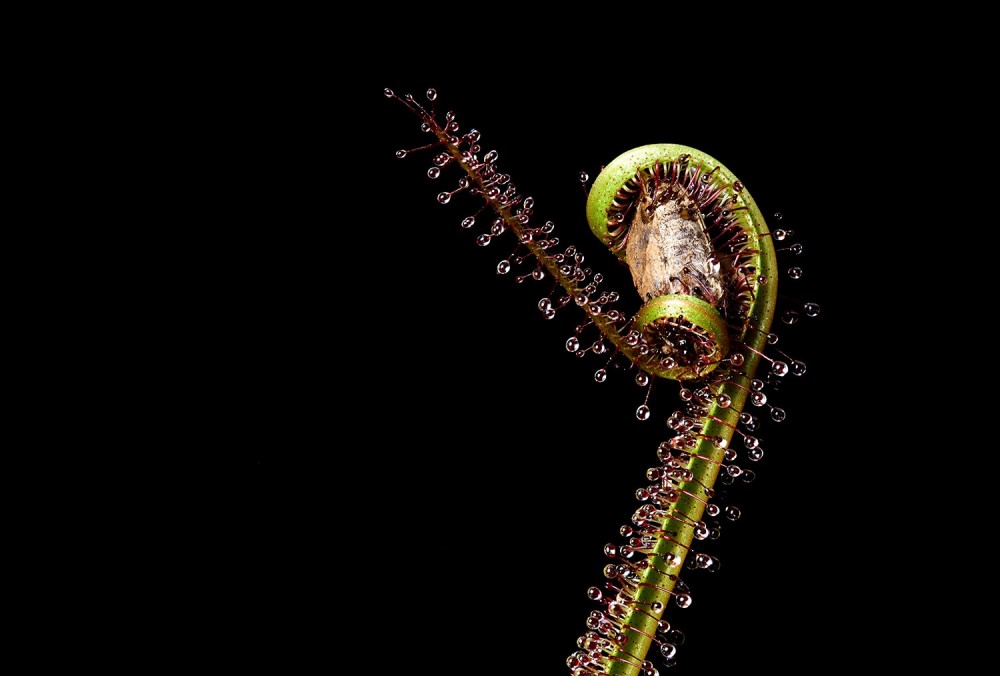
↑ King sundew (Drosera regia)
Most sundews have the ability to turn their tiny gelatinous hairs toward their victims to entrap and digest them. But this species, which is typically found in South Africa, takes the strategy a step further. The species wraps entire leaves around wriggling insects to make sure they’re snug and ready to be digested. “[King sundews] are acrobats,” says Zachary Leibovitch, gardener in charge of carnivorous plants at the US Botanic Garden. “They will contort themselves around their prey.”
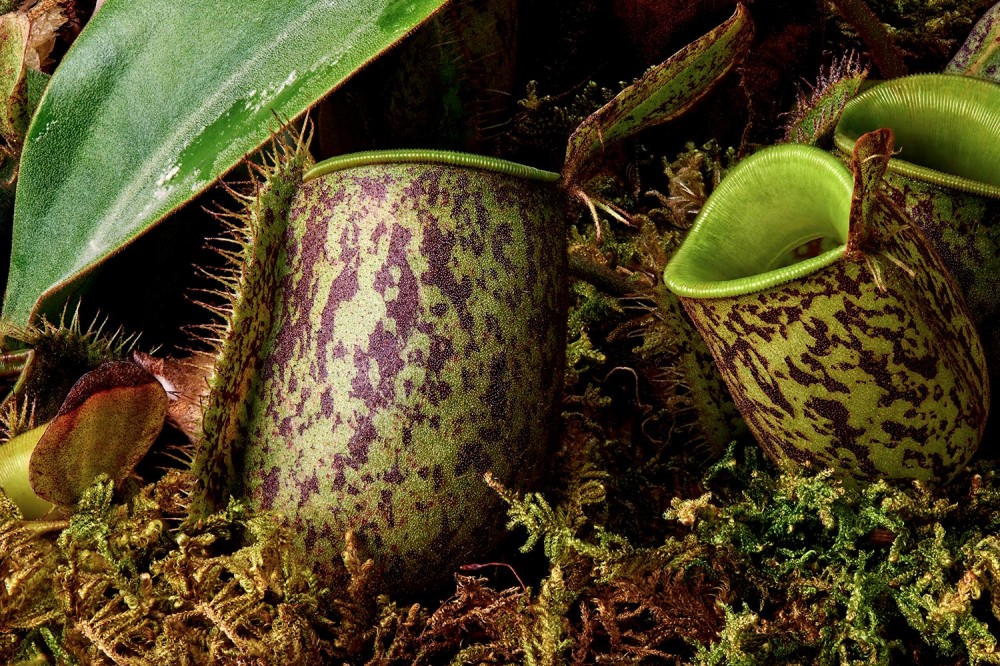
↑ Narrow-lidded pitcher plant (Nepenthes ampullaria)
These stubby pitcher plants, which range across the Pacific tropics, have two ways of snacking: They engulf insects the classic way, but also collect falling leaves, detritus, and sometimes animal droppings for extra nutrition. The tubes act like rain barrels, catching drops of water from the sky to dilute the digestive juices and provide a safe space for critters that aren’t prey. “There are species of frogs that will actually lay their eggs inside of the pitchers,” says Leibovitch.
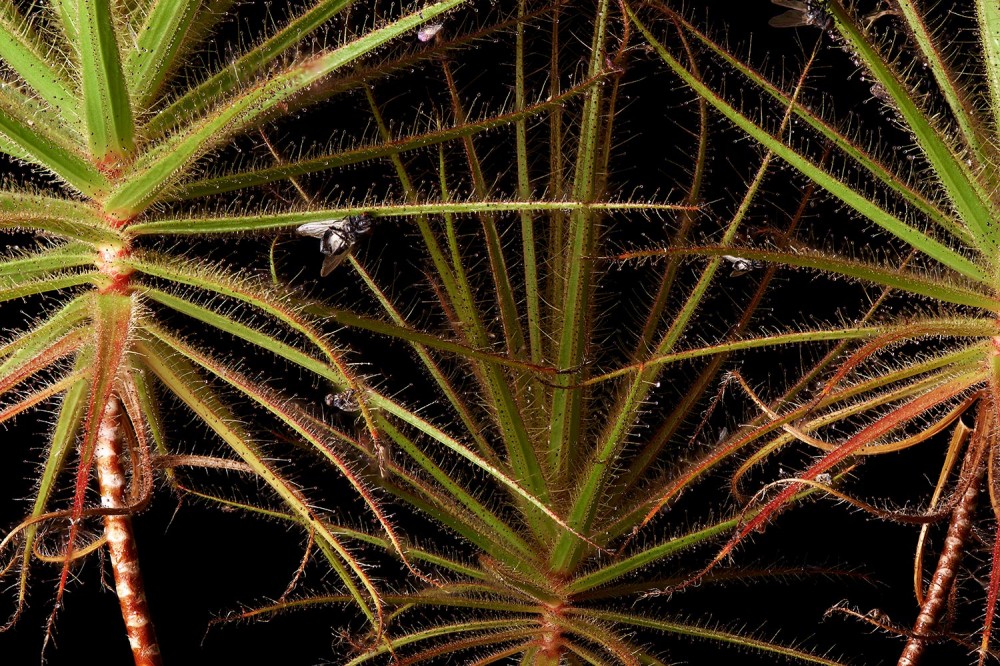
↑ Flycatcher bush (Roridula gorgonias)
This South African specimen is not a true carnivorous plant, says Leibovitch. To qualify, species have to catch, kill, and process their own food. While the flycatcher bush can snag its prey with sticky residue, it doesn’t have the right enzymes to break the living tissue down into usable energy. Instead, it developed a symbiotic relationship with the assassin bug, Pamerida roridulae. The six-legged hunters are able to walk around the sticky traps and eat what’s landed there. As they relieve themselves, the plant absorbs the remnants of the already-digested meal.
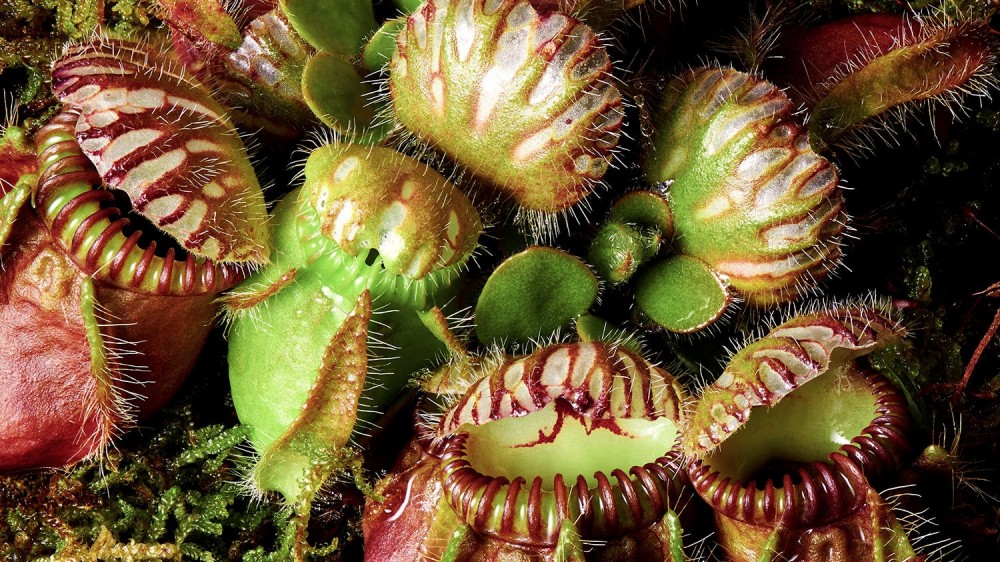
↑ Australian pitcher plant (Cephalotus follicularis)
The Australian pitcher plant is the lone meat eater in a botanical family that’s otherwise completely photosynthetic. This species might share the tubular shape of other pitcher plants, and it preys the same way, but it’s actually more closely related to the tree that produces star fruit.
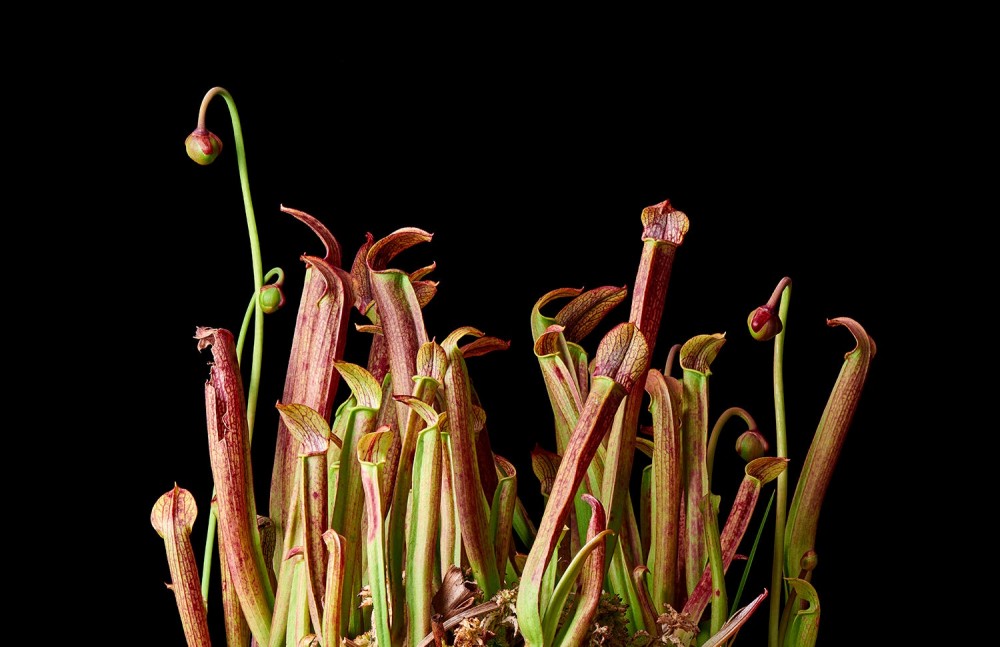
↑ Sweet pitcher plant (Sarracenia rubra)
A tasty, sugary nectar lures insects to this pitcher plant. Slippery, downward-facing hairs then cause them to plummet to the “belly,” where enzymes digest the insects over the course of a few weeks.
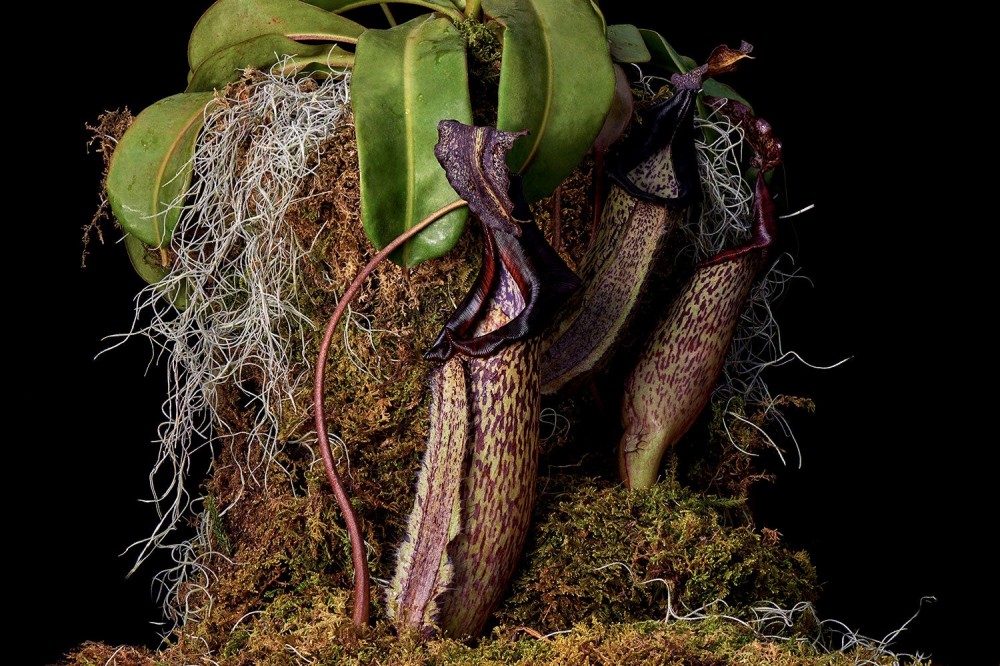
↑ Great pitcher plant (Nepenthes maxima)
The great pitcher plant starts its life in a rosette on the ground. But from the time it grows its first true leaves, it can hunt. Like other species of Nepenthes, the Indonesia-based species has evolved two different styles of pitchers to maintain this lifetime of munching: one to catch crawling creatures and the other to snare airborne ones high up in the canopy.
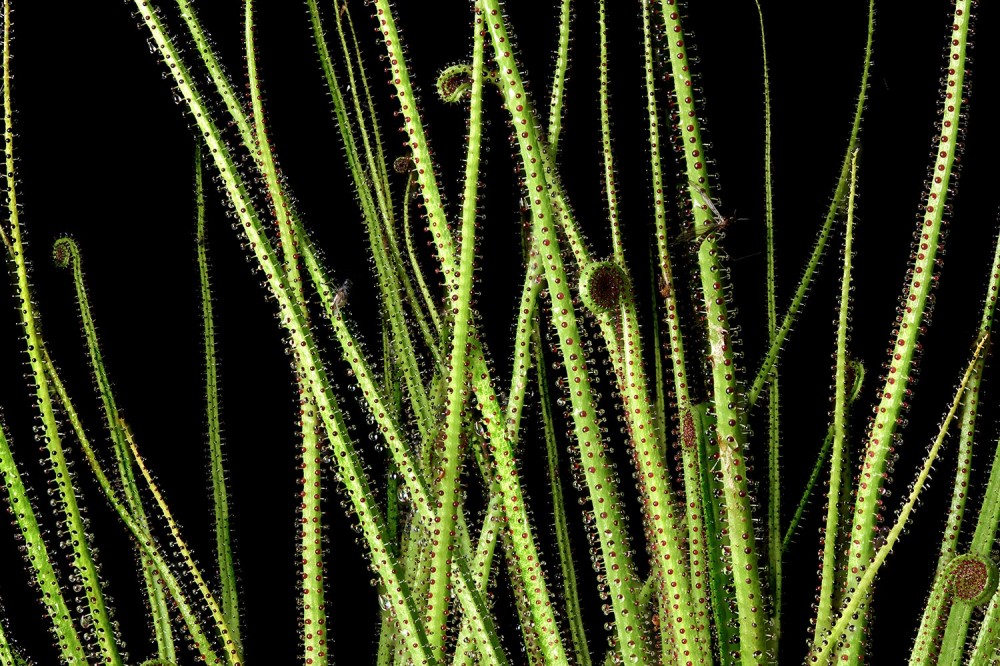
↑ Dewy pine (Drosophyllum lusitanicum)
In its Portuguese homeland, the common name for this specimen is “slobbering pine.” Though it is definitely not an evergreen, the name has stuck because the plant is covered in beads of a special carbohydrate-filled goo called mucilage. These oozing drops not only capture flies and other small insects, they also harvest the fog that blows off the Atlantic Ocean or Mediterranean Sea on summer nights for a refreshing drink.
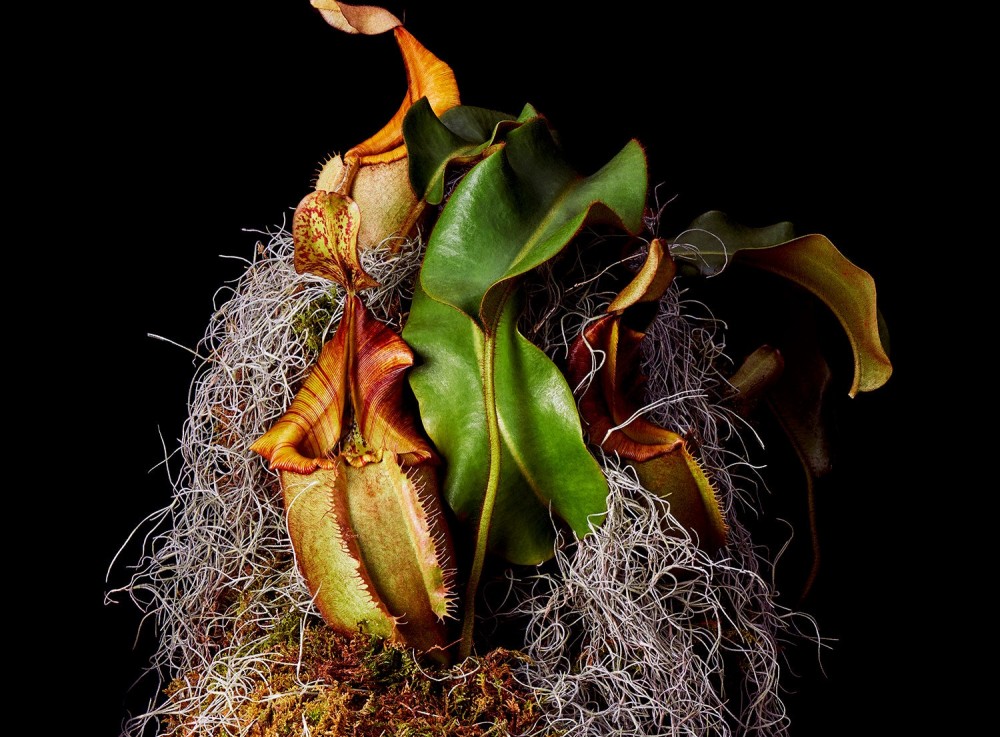
↑ Veitch’s pitcher-plant (Nepenthes veitchii)
This variety of pitcher plant thrives at high altitudes in southeast Asia. While most of its close relatives climb trees with their grapelike vines, Leibovitch says Veitch’s follows a pattern that looks more like shingles on a house. Frederick William Burbidge, who collected these plants for the British Veitch Nursery in 1877, wrote that they “actually clasp around the tree just as a man would fold his arms around it.” This firm grip allows them to collect bugs and light that they wouldn’t otherwise be able to access.
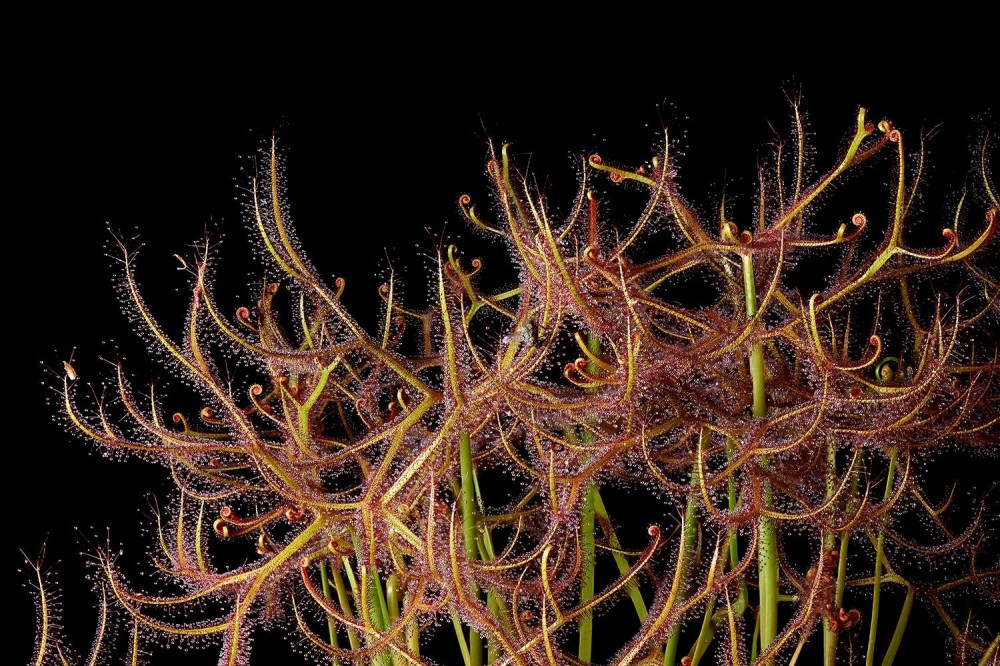
↑ Forked leaf sundew (Drosera binata)
This particular specimen has been growing at the US Botanic Garden since 1982. It’s a senior in Drosera years: The average lifespan of the species in the wild is about 50 years, longer if environmental conditions allow. Leibovitch says its dustlike seeds float over the greenhouse and colonize other carnivorous plants’ pots. “It’s almost a weed,” he explains.
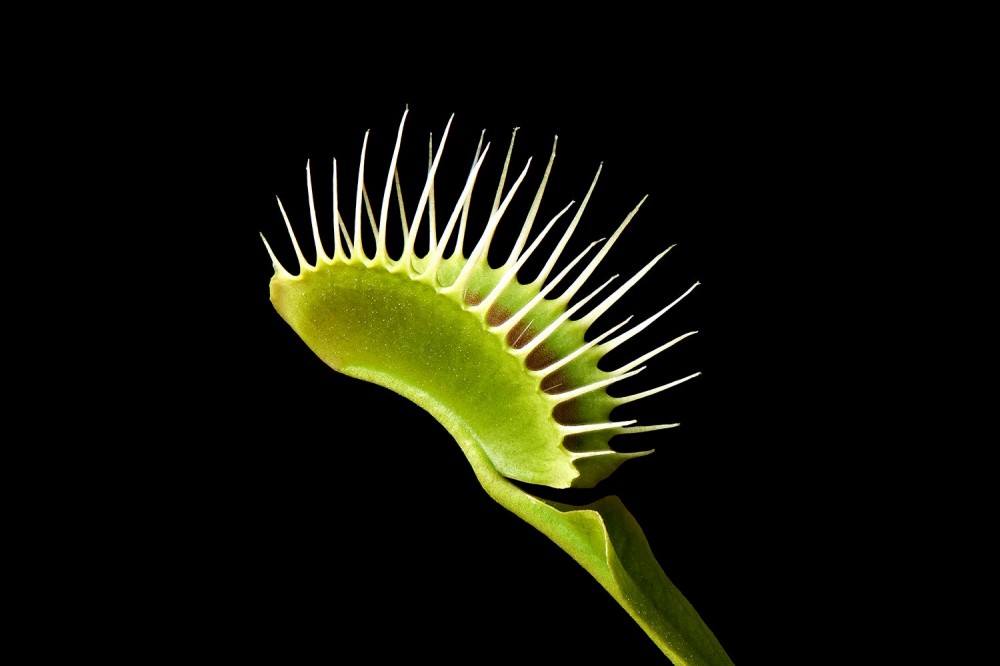
↑ Venus flytrap (Dionaea muscipula)
These Carolina specialties might have a ruthless reputation, but they’re highly sensitive creatures. Their half-oval traps have three small, light-colored hairs on each side (farther in from the spines), says Leibovitch. The insect has to touch at least two of the triggers within seconds to set off a reaction. Even once the trap is shut, the flailing prey has to continually touch the hairs inside to seal the jaws and release digestive juices. The flytrap reopens after absorption, revealing an empty exoskeleton. Predatory animals like wasps often swoop down for the crispy snacks and become victims themselves.
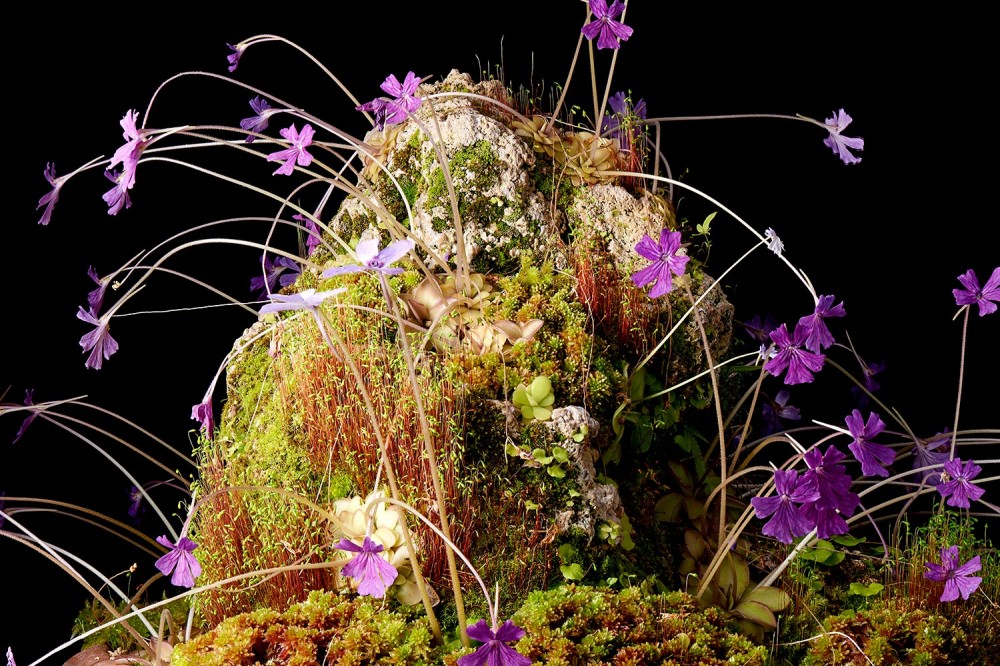
↑ Mexican butterwort (Pinguicula Seductora)
This succulent grows off the sides of limestone cliffs. Butterworts’ slim purple flowers attract pollinating hummingbirds, but they also boost their nutrient consumption by catching small flying insects with their slimy leaves.
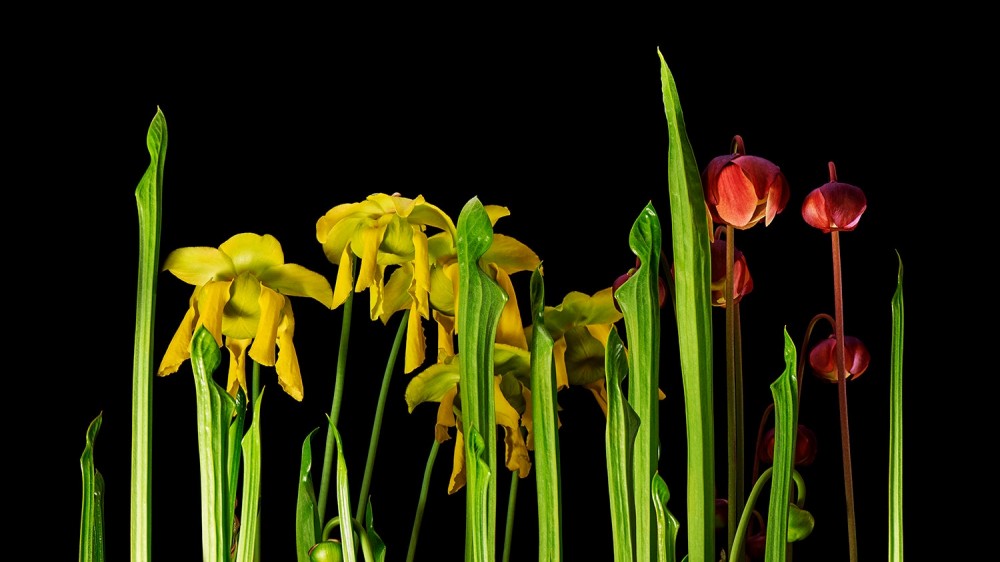
↑ North American pitcher plants (Sarracenia)
These native species of North American pitcher plants catch the attention of larger insects with their colorful flowers. In the botanical garden’s greenhouse, carpenter bees sometimes drink the intoxicating nectar and stumble into the subtle pitchers. The bees can bore themselves out with drill-like mandibles—for a fleeting taste of freedom. “I’ve watched them crawl out and fall right back into the top,” says Leibovitch. “They’re not the smartest.”
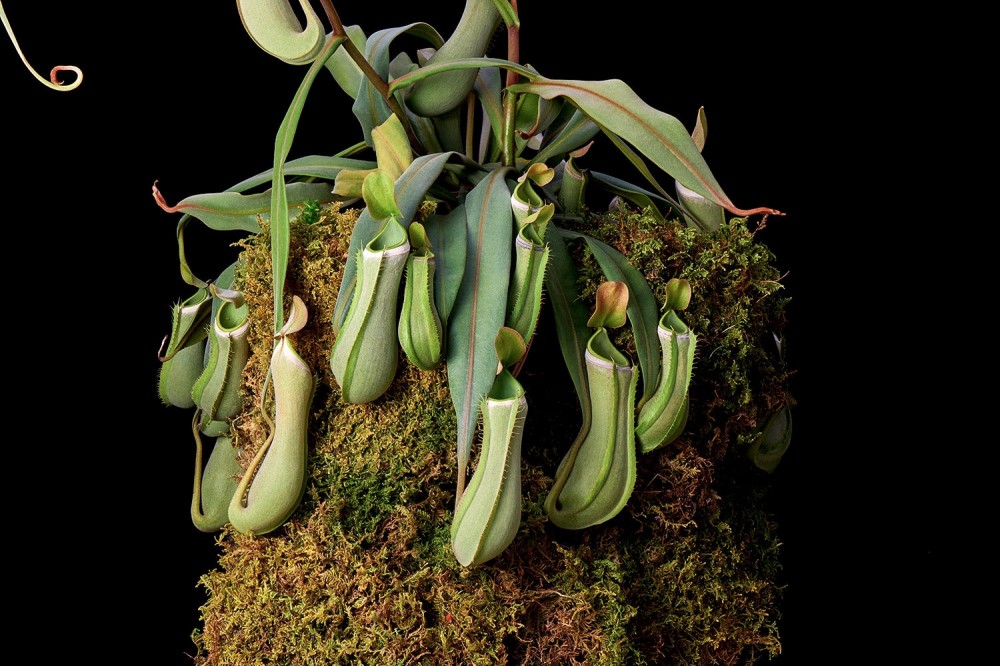
↑ White-rimmed pitcher plant (Nepenthes albomarginata)
This Indonesian pitcher plant is recognizable by its white ring, which specifically attracts termites. As the herbivorous insects gather to munch on the tiny pale hairs, some inevitably fall into the tubes and nourish the plant. By the time the termites nibble away the last of the hairs, the pitcher is full. And though the appendage withers away, there are plenty of backup lures to carry on the hunt.
Read more PopSci+ stories.










